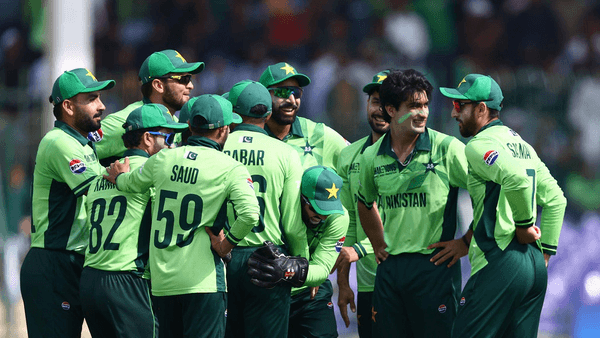
Female Genital Mutilation: A Question of Culture or a Crime?
My university recently ended and I was sitting idle, clueless what to do, so I decided to browse
the internet. What I didn’t know was that I was about to get acquainted with another plight of
women, which is faced globally. I came across a publication on female genital
mutilation and it instantly rang a bell in my head. Back in university somewhere, I had
read about the issue but wasn’t aware of its gravity, so I decided to give the publication a read.
After reading and learning more about the painful procedure and its commonality, to say I was
mortified, would be an understatement.
Studying gender studies course in my undergrad, specifically with a focus on gender equality
provided me clarity about how women all over the world have been oppressed over
the years and how multifaceted approaches have been opted to restrain their sexual freedom.
However, this particular subject wasn’t given much attention back in the day.
Prevalence of the Problem
According to world health organization (WHO), More than 230 million females alive today have
been the victim of traumatic practice of female genital mutilation (FGM) in 30 countries
across Africa, the Middle East and Asia. In Pakistan, this practice usually takes place in
Dawoodi Bohra community, mostly originating from the Gujarat region. There are an estimated one million Dawoodi Bohras worldwide, with the vast majority (approximately 80%) living in India and Pakistan. Pakistan has an estimated population of 100,000 Dawoodi bohra’s residing in the country. According to a survey report, approximately 80% to 90% of their women have undergone the trauma of genital mutilation.
What is Female Genital Mutilation?
The question arises: what actually is female genital mutilation and why does it takes place? In
simpler terms, it’s the removal of clitoris or external part of female genitalia through
unprofessional protocols, solely due to traditional and social legacies. This is considered a social
convention and females often succumb to this social norm to get accepted in societies and
communities where this procedure is considered conventional. Otherwise, the fear and guilt of
being rejected by their social circle is quite substantial.
This practice is perpetuated to foster premarital virginity and a mandatory method of preparing a girl for puberty, adulthood and eventually marriage. It is almost always carried out by traditional practitioners or old women of the community on minors aging somewhere between infancy and early teenage. This
horrendous procedure is usually done without sedation or general anesthesia, eventually
resulting in excruciating pain and a life time of Post-traumatic stress disorder (PTSD) to the
woman going through it.
WHO Classification of FGM
Medically, Female genital mutilation (FGM) has been classified into 4 categories by the world
health organization. First is the partial or total removal of the clitoral glans. Second category being
the partial or total removal of the clitoral glans and the inner folds of the vulva – with or without
removal of the outer folds of skin of the vulva. Third being the narrowing of the vaginal opening
through the creation of a covering seal. The seal is formed by cutting and repositioning the labia minora or labia majora, also known as infibulation. Subsequently, the fourth category includes
pricking, piercing, incising, scraping and cauterizing the genital area.
Why is it done?
All the above mentioned forms of genital mutilation have been proven to be futile in regards to
health improvement. Any sort of genital mutilation only causes and aggravates reproductive
health complications for women adding on to their numerous miseries. It can cause blood loss,
hemorrhage, tissue swelling, vaginal problems, fever, urinary problems and often death.
Evidently, there’s neither health benefits attach to this practice nor any other advantages, so
the question arises: why is it being done so frequently? It is clearly to curb sexual freedom of women, snatching their ability to feel certain emotions.
Uprooting the Underlying Causes
Moving on to the real underlying problem, why hasn’t government or legal platforms
intervened to this peril of women’s lives? The answer lies in internalized misogyny, societal taboos
and lack of recognition of the issue. Coexisting communities & organizations don’t consider
FGM as a social problem or an issue to begin with. This secret is well kept within the Dawoodi
Bohra community and the country, helping in its perseverance. There’s no empirical studies,
extensive statistical data, researches, legislations or political dialogues that could assist in the
initiation of discourse over this crucial subject.
In the National plan of action (2006), the government of Pakistan acknowledged the gruesome issue but did not take any further action to mitigate or eradicate the problem. The laws of physical harm and child
protection in Pakistan nowhere mentions any action against FGM, eventually constraining some
amelioration.
Albeit, globally the practice is officially considered as a violation of human rights and body autonomy. In Africa, where FGM is practiced on a broader scale, there is acknowledgement and ample number of studies available to educate oneself and actions are being taken to address the national issue and some work is being done to abolish the practice, unlike Pakistan, where we don’t even consider this a problem.
Read More: Women’s rights? A mere joke!
The Way Forward
A country like Pakistan, which is so regressive in most aspects and somewhat detest the women living here, requires mass mobilization of community leaders, activists and prominent political entities to address the issue and then eventually work on it resolution. It will require a tedious and slow
community engagement to overcome this decade old crime against women. However, it is a step that must be taken to put end to this horrible practice.
Sukena Afzal is a graduate of the University of Karachi with keen interest in subjects related to feminism and social affairs. She is also a budding writer.
Image Credits: Ansar Burmey Org.


